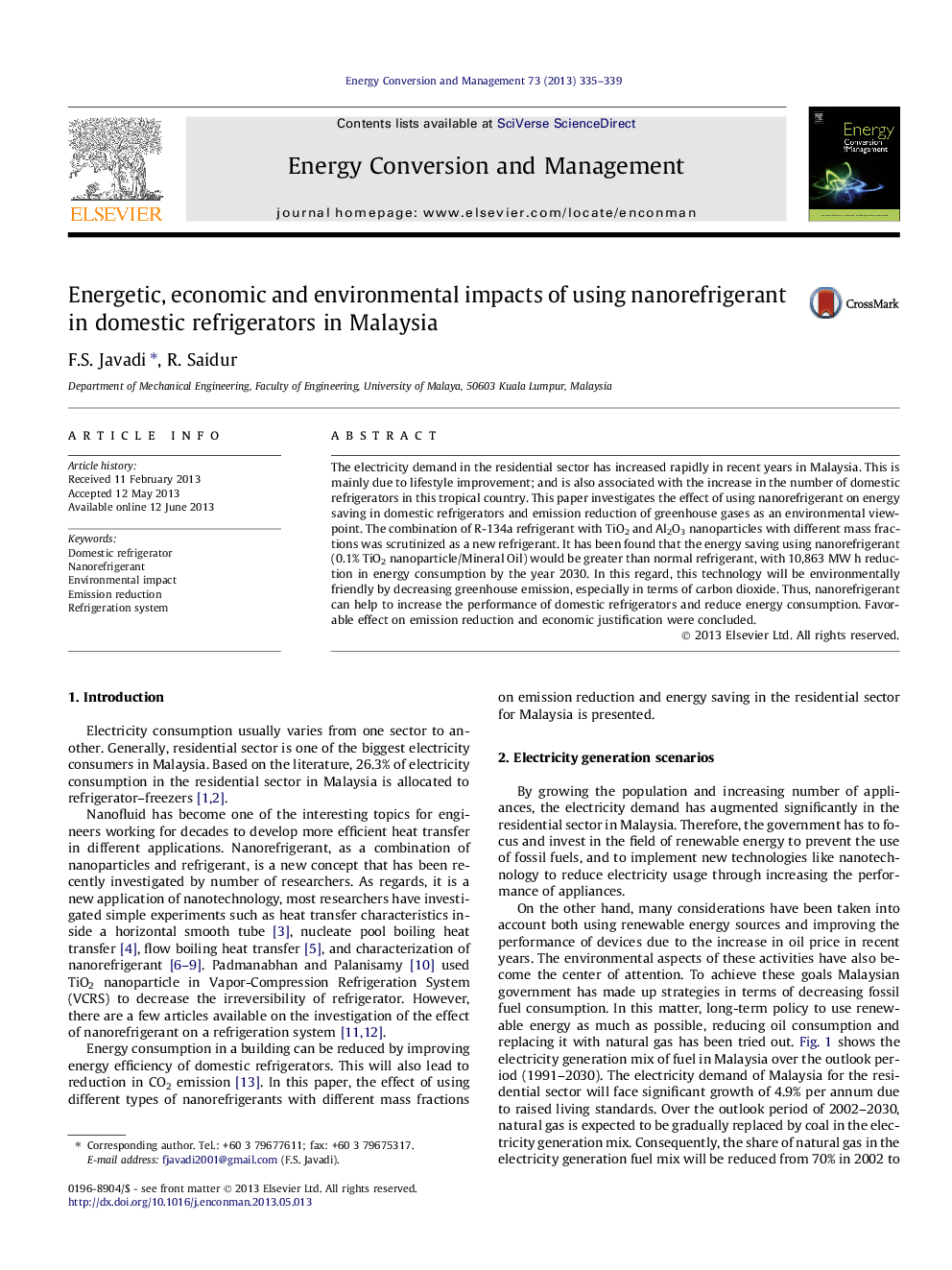| کد مقاله | کد نشریه | سال انتشار | مقاله انگلیسی | نسخه تمام متن |
|---|---|---|---|---|
| 764267 | 1462889 | 2013 | 5 صفحه PDF | دانلود رایگان |

• Energy saving of using nanorefrigerant except of normal refrigerant in domestic refrigerator is investigated in Malaysia.
• Using nanorefrigerant cause to reduce energy consumption of domestic refrigerator.
• The maximum energy saving would be happen in case of using 0.1% TiO2–mineral oil–R134a nanorefrigerant.
• Emission reduction is an environmental effect of using nanorefrigerant.
The electricity demand in the residential sector has increased rapidly in recent years in Malaysia. This is mainly due to lifestyle improvement; and is also associated with the increase in the number of domestic refrigerators in this tropical country. This paper investigates the effect of using nanorefrigerant on energy saving in domestic refrigerators and emission reduction of greenhouse gases as an environmental viewpoint. The combination of R-134a refrigerant with TiO2 and Al2O3 nanoparticles with different mass fractions was scrutinized as a new refrigerant. It has been found that the energy saving using nanorefrigerant (0.1% TiO2 nanoparticle/Mineral Oil) would be greater than normal refrigerant, with 10,863 MW h reduction in energy consumption by the year 2030. In this regard, this technology will be environmentally friendly by decreasing greenhouse emission, especially in terms of carbon dioxide. Thus, nanorefrigerant can help to increase the performance of domestic refrigerators and reduce energy consumption. Favorable effect on emission reduction and economic justification were concluded.
Journal: Energy Conversion and Management - Volume 73, September 2013, Pages 335–339